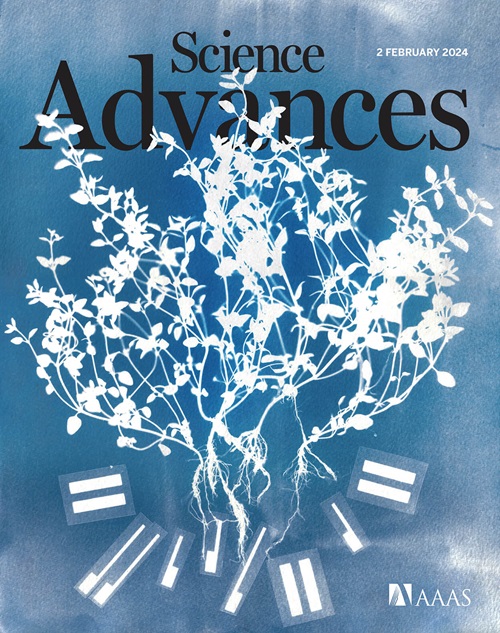Ultrabright difuranfluoreno-dithiophen polymers for enhanced afterglow imaging of atherosclerotic plaques
IF 11.7
1区 综合性期刊
Q1 MULTIDISCIPLINARY SCIENCES
引用次数: 0
Abstract
Cardiovascular diseases, including stroke driven by atherosclerosis, remain a leading global health concern. Current diagnostic imaging modalities such as magnetic resonance imaging fail to characterize oxidative stress within atherosclerotic plaques. Here, we introduce difuranfluoreno-dithiophen–based polymers designed for afterglow imaging, offering ultrabright luminescence, ultralow-power excitation (0.087 milliwatts per square centimeter), and ultrashort acquisition times (0.01 seconds). Through a molecular engineering strategy, we have optimized polymers for enhanced reactive oxygen species (ROS) generation capability, ROS capturing capability, and fluorescence quantum yield, resulting in an increase in afterglow intensity (~130-fold) compared to commonly used 2-methoxy-5-(2′-ethylhexyloxy)-1,4-phenylenevinylene polymer (MEHPPV). Additionally, we have developed ratiometric afterglow nanoparticles doped with oxidative stress–responsive molecules, enabling imaging of oxidative stress markers in atherosclerotic plaque. This approach provides a tool for cardiovascular imaging and diagnostics, which is conducive to the auxiliary diagnosis and risk stratification of atherosclerosis.

求助全文
约1分钟内获得全文
求助全文
来源期刊

Science Advances
综合性期刊-综合性期刊
CiteScore
21.40
自引率
1.50%
发文量
1937
审稿时长
29 weeks
期刊介绍:
Science Advances, an open-access journal by AAAS, publishes impactful research in diverse scientific areas. It aims for fair, fast, and expert peer review, providing freely accessible research to readers. Led by distinguished scientists, the journal supports AAAS's mission by extending Science magazine's capacity to identify and promote significant advances. Evolving digital publishing technologies play a crucial role in advancing AAAS's global mission for science communication and benefitting humankind.
 求助内容:
求助内容: 应助结果提醒方式:
应助结果提醒方式:


